Column: Biden’s Western solar plan sounds scary. But it’s better than climate change
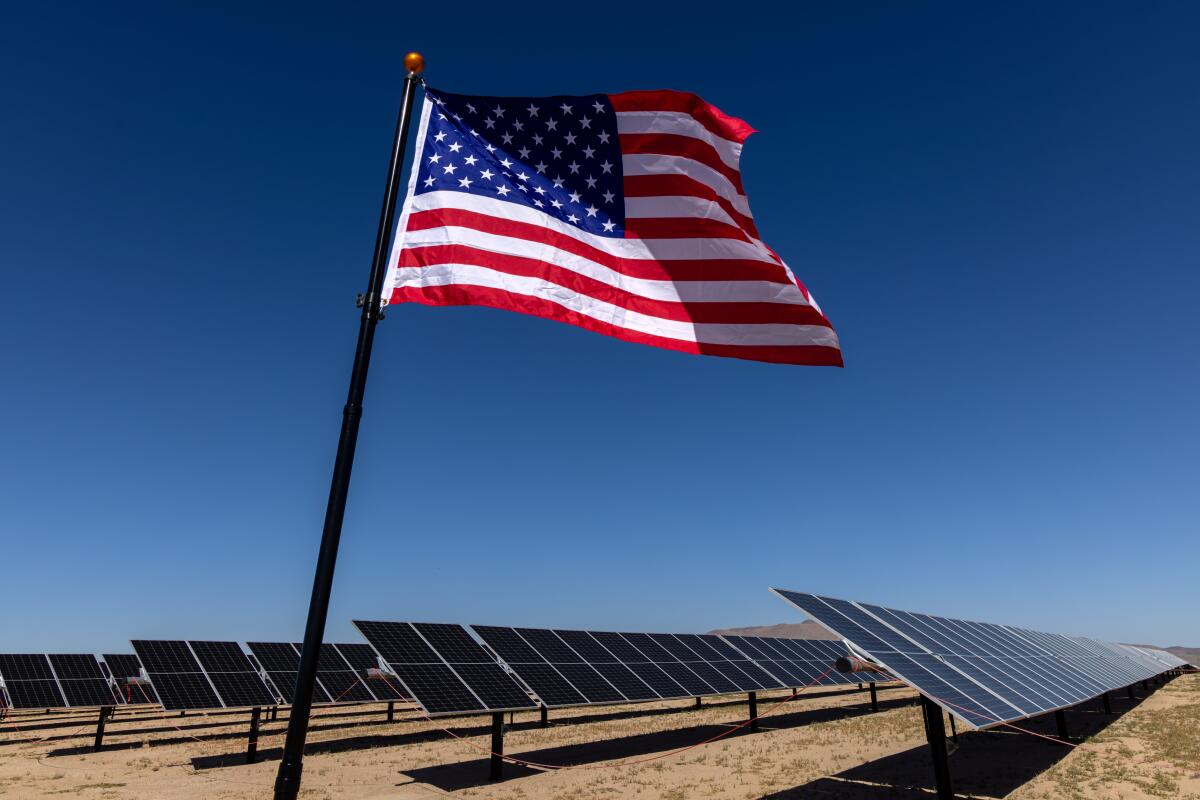
- Share via
A single federal agency oversees nearly a quarter-billion acres of public lands — and those acres could play a key role in fighting climate change by hosting vast fields of solar panels and wind turbines that limit our need to burn fossil fuels.
The American public could embrace this latest evolution of our shared domain.
Or we could reject further industrial development of our public lands and instead preserve them for the sake of wildlife habitat, healthy ecosystems and scenic hikes — while requiring renewable energy companies to find other places to build.
So which should we choose: clean energy or conservation?
Right now, President Biden is trying to thread the needle.
You're reading Boiling Point
Sammy Roth gets you up to speed on climate change, energy and the environment. Sign up to get it in your inbox twice a week.
You may occasionally receive promotional content from the Los Angeles Times.
The Biden administration released its long-awaited Western Solar Plan last month, laying out a vision for where sprawling solar farms should be allowed — and where they should be blocked — across 11 Western states, including California. The plan covers 162 million acres overseen by the U.S. Bureau of Land Management and tentatively concludes that companies should be able to propose solar projects across 22 million acres — an area roughly the size of Maine.
That’s a whole lot of land. If you hadn’t noticed, though, global warming is fueling a whole lot of harm: heat waves surpassing 120 degrees in Los Angeles County, Lake Mead falling to record lows, catastrophic megafloods doubling in likelihood. Plants and animals are feeling the strain too, with fast-rising temperatures pushing many species toward extinction.
“It’s going to take everything to meet the climate challenge,” said Laura Daniel-Davis, a top official at the U.S. Interior Department. “It’s important that our shared public lands be part of meeting our clean energy goals.”
Those goals are ambitious. President Biden wants to transition the U.S. power grid to 100% clean energy by 2035, 10 years ahead of California’s target and in line with what scientists say is needed to avoid the worst consequences of the climate crisis.
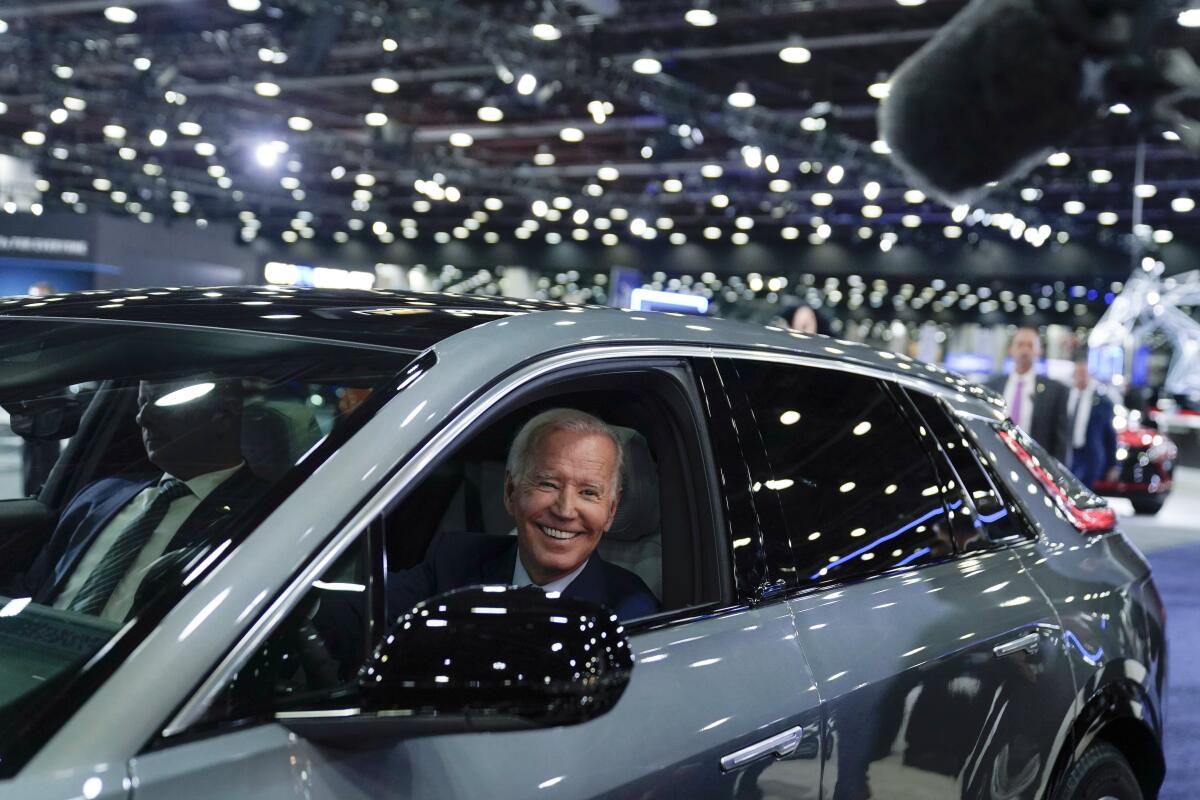
To be clear, nobody expects 22 million acres of public lands to be gobbled up by solar panels. The Bureau of Land Management projects that just 700,000 acres covered by its new Western plan will be needed to meet the nation’s climate targets.
But if you want to cover 700,000 acres with solar panels — that’s an area smaller than Rhode Island, by the way — you can’t just circle 700,000 acres on a map and tell solar developers to go build there. There are too many complications that can get in the way once developers actually zoom in and examine possible project sites.
For instance, the land may be more important for desert tortoises or other creatures protected by the Endangered Species Act than was previously understood. There could be opposition from neighboring landowners who don’t want to live next to a solar farm. There could be bottlenecks on nearby power lines that make it difficult to send electricity to the cities that need it.
Hence Biden’s strategy: Take a high-level look at which lands are most suitable for solar farms; offer companies a wide array of options; and then examine the merits and drawbacks of individual projects before deciding whether to approve them.
“Every single project, every single time, still is going to get that robust, site-specific look,” Daniel-Davis told me.
It makes sense, at least in theory. But we live in practice, not in theory.
In practice, there are many conservationists who love our public lands and want to keep them as pristine as possible — even if that means putting more solar panels in places where development is more expensive or more technically challenging, such as household rooftops, irrigation water canals or former mines. In practice, there’s plenty of disagreement over the right balance between solar on public lands and solar on some of those lower-impact, higher-cost places.
So what kind of balance does President Biden’s plan strike?
I’ve spent the last few weeks evaluating that question. Here’s what I’ve learned.
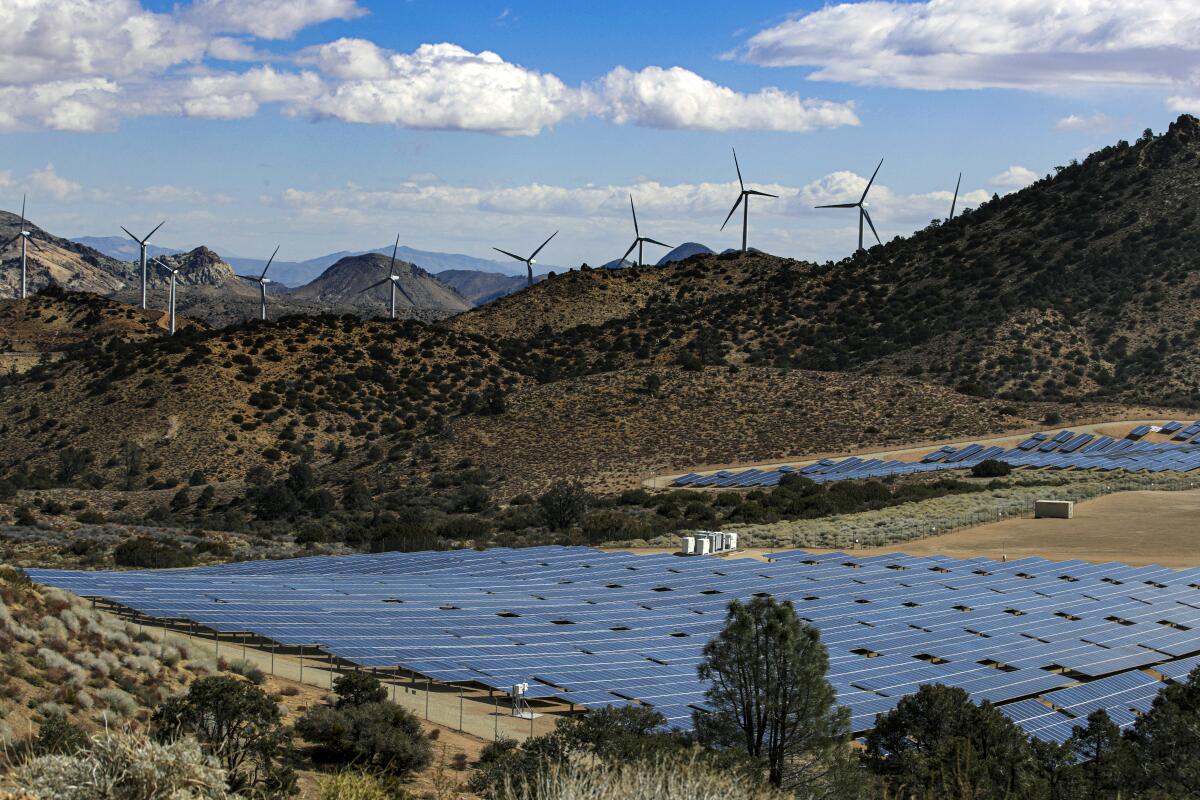
Let’s start with the solar industry, which sounds relatively pleased with Biden’s road map.
Ben Norris, vice president of regulatory affairs at the Solar Energy Industries Assn., described the plan as “mostly good,” saying it should allow companies to propose projects across 30 times as many acres as are currently designated solar priority zones.
The Biden administration would accomplish that in part by opening up public lands across five states — Idaho, Montana, Oregon, Washington and Wyoming — that aren’t part of the current federal solar plan, finalized more than a decade ago.
“Twenty-two million acres is getting us a lot closer to the numbers that oil and gas currently enjoy,” Norris said.
Even if the administration moves ahead with the 22 million acres — more on that in a minute — there’s a big difference between opening up land for renewable energy and seeing that land get built out, as developers are well aware.
Solar and wind farms can spend years going through rigorous environmental analyses required by federal law — analyses that sometimes end in rejection, especially if a project stirs up opposition from conservation activists or nearby towns.
Even for developers who don’t face environmental hurdles or local opposition, finding a buyer for their power — and financing to build their projects — can be impossible if there are no transmission lines nearby with capacity to ship out electricity.
Peter Weiner, a lawyer who represents solar companies, said Biden’s plan could be improved to help bring projects to fruition.
For one thing, the plan would limit new solar farms to public lands within 10 miles of existing or planned power lines. In theory, that’s a good way to direct companies to the best spots. But do federal officials really know every electric line that will be built in the years to come? What if a developer is willing to spend a bit more money to connect to a line 12 or 15 miles away?
Those may sound like minor details. But they could help determine the fate of the planet.
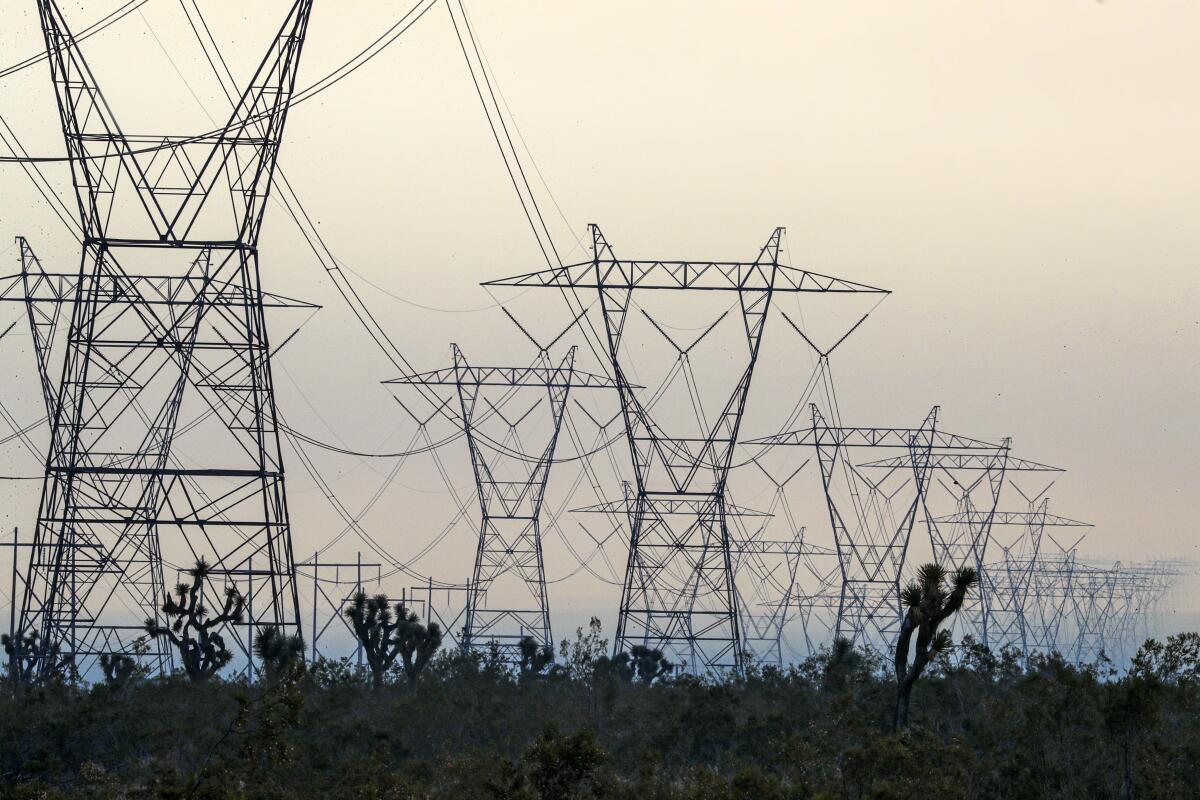
Weiner also described the federal government’s maps as “grainy,” saying they offer “more of a 30,000-foot view than a ground-level view” of which public lands are suitable for solar. It will be up to developers to study specific sites themselves.
Federal officials “don’t have the resources to do that level of planning,” Weiner told me.
I was intrigued to hear a similar observation from one of the most vocal critics of solar on Western public lands.
That would be Patrick Donnelly, who lives near Death Valley National Park and is Great Basin director at the Center for Biological Diversity, an advocacy group. He told me his biggest problem with Biden’s plan is that it’s a “desktop exercise” that uses “a pretty arbitrary set of criteria” to determine which lands should be closed off to solar. Federal officials, he said, failed to take advantage of “on-the-ground knowledge” to more precisely map out appropriate development zones and protected areas.
As an example, Donnelly pointed to the desert lands surrounding Nevada’s Ash Meadows National Wildlife Refuge, which he said the Biden administration’s plan would leave open to solar development — even though federal officials recently classified several solar projects proposed for those lands as “low priority” due to potential harm to the wildlife refuge.
The federal government’s criteria for deciding which areas should be off limits to solar — including endangered species habitat, popular hiking spots and places sacred to Indigenous tribes — “didn’t flag areas that should be obvious,” Donnelly said.
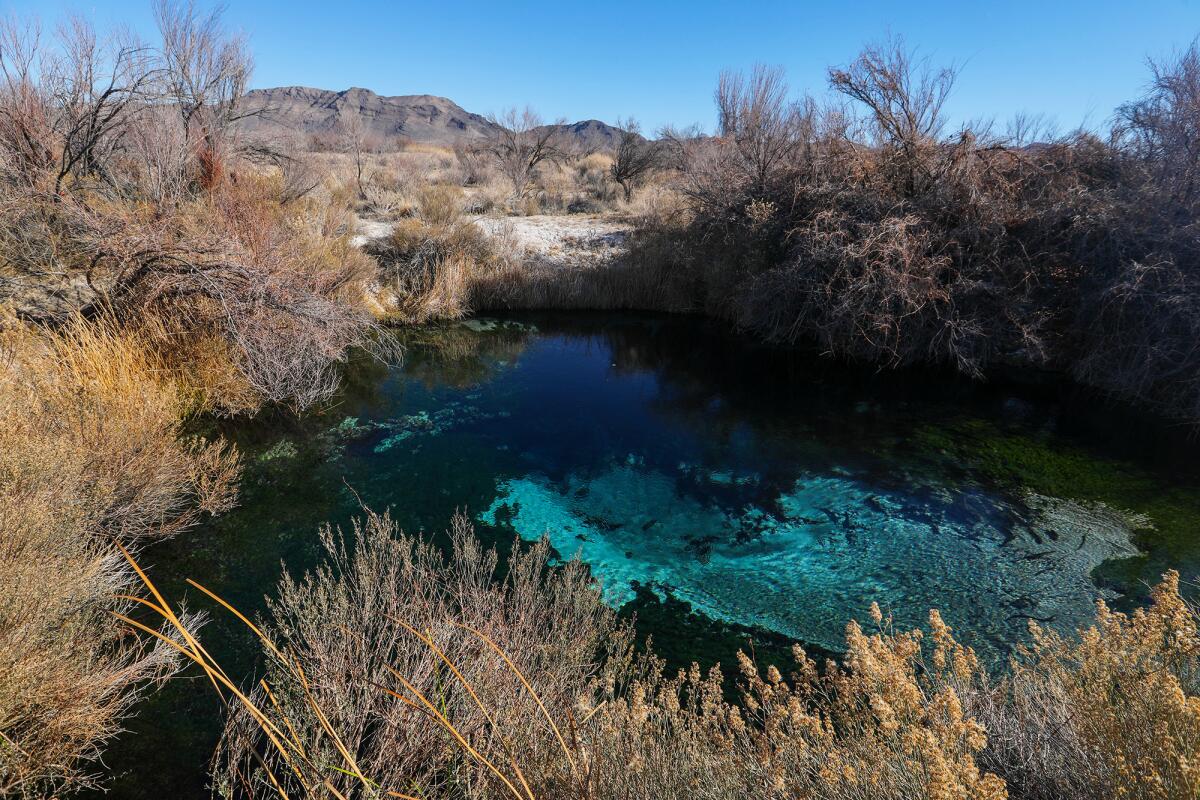
As I talked with Donnelly, Weiner and others, I kept thinking back to something that Tracy Stone-Manning, the Bureau of Land Management’s director, told me when I interviewed her at an environmental journalism conference in April.
To speed up solar and wind development on public lands, she said, her agency needs a lot more money from Congress to hire additional staff members, who can more thoroughly map out the best spots and conduct environmental analyses.
“The biggest problem is having enough people to do the work,” Stone-Manning said.
At the time, that sounded to me like a bit of an excuse. Now I find myself nodding along.
As long as Republicans retain at least partial control of Congress — they currently run the House — more money for clean energy isn’t likely. It almost certainly won’t happen if Donald Trump returns to the White House. Elections have consequences.
Whatever happens in November, though, some solar developers and conservationists will keep looking for common ground.
I wrote in the fall about “Uncommon Dialogue,” a Stanford University initiative that produced a first-of-its-kind agreement in which a dozen prominent developers and environmental groups pledged to work together to limit ecosystem damage from solar farms. Their dialogue continues, with six working groups crafting development guidelines and policy recommendations.
One of their goals is to come up with incentive programs that encourage companies to build fewer solar farms on pristine public lands and more on already disturbed areas such as Superfund sites, landfills, former mines and water reservoirs — places where it’s typically more expensive to build. The “Uncommon Dialogue” partners also hope to promote solar development on farmland, which helps save water in drought-stressed regions but can provoke opposition from neighboring farmers.
Dan Reicher, the Stanford University researcher and former Clinton administration official who launched and leads the initiative, told me he expects most solar projects in the United States to be built on private lands, rather than public lands.
“The vast proportion is going to be on private agricultural lands,” he predicted.
President Biden’s solar plan forecasts a different outcome, at least for the American West.
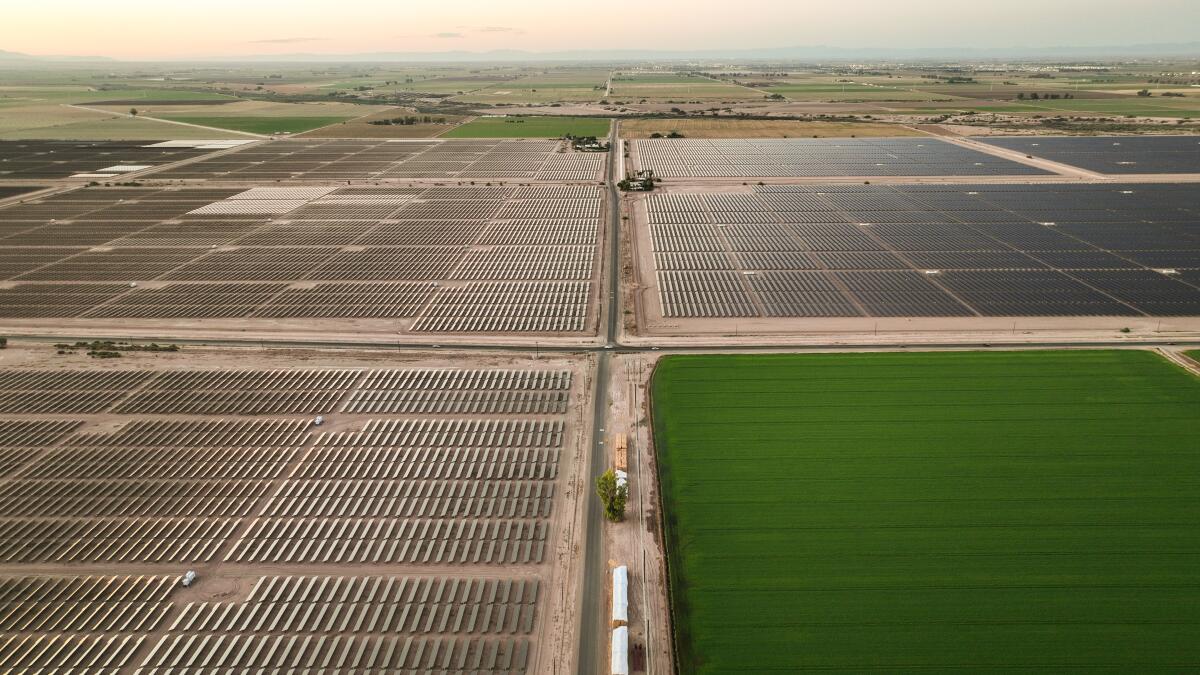
The Bureau of Land Management estimates that over the next 20 years, solar projects will be built across nearly 1 million acres under its jurisdiction in the West — the 700,000 acres I mentioned above, plus an additional 280,000 already open to solar developers in the California desert under an Obama-era federal plan. That’s three times as many acres as the agency estimates will need to be dedicated to solar on all other lands, public or private, in the 11 Western states included in the new plan.
Does that make sense? Should public lands be responsible for hosting three-quarters of the West’s solar farms?
As a lover of those gorgeous landscapes — some of my most cherished memories include backpacking Wyoming’s Teton Crest Trail and camping in Death Valley — my gut reaction is, “No.” Even the federal officials behind the Western Solar Plan seemed to agree, writing that the amount of public land they assumed would be needed for solar was “likely an overestimate.”
For some conservationists, those questionable numbers are one of several reasons the idea of opening 22 million acres of public lands to possible solar development “doesn’t really pass the laugh test,” in the words of Matt Kirby, senior director of energy and landscape conservation at the National Parks Conservation Assn., an advocacy group.
“Why open up all that land and let industry choose?” he asked.
Kirby would prefer to see the Biden administration ditch its current “preferred alternative” — the one with the 22 million acres — and instead select Alternative 5, which would limit solar applications to 8 million acres of previously disturbed lands.
“We’re now in a situation that essentially puts industry in the driver’s seat,” Kirby said.
Members of the public can still weigh in. Before finalizing the Western Solar Plan, the Bureau of Land Management will host eight public meetings to gather input, including two Zoom meetings, the first of them this Monday at 10 a.m. PT.
Federal officials are also finalizing a regulation that would dramatically reduce the fees paid by renewable energy companies with projects on public lands. Another regulation nearing completion would put ecosystem protection on an equal footing with energy development — one more effort to strike the right balance between clean power and conservation on federal lands.
I wish I could tell you what the right balance looks like. But these are complex challenges with no easy answers.
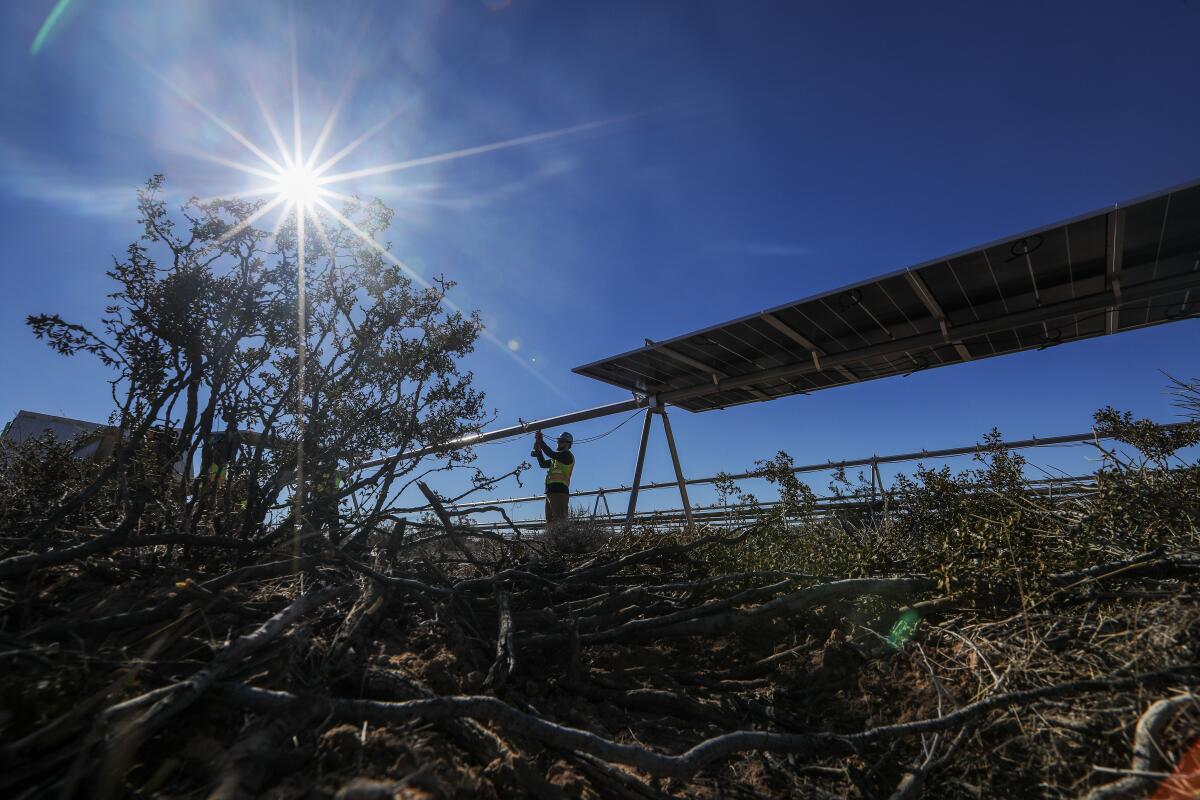
I sympathize with the solar and wind executives who recognize global warming as the greatest threat facing humanity and have asked for as much land as possible — even if they’re motivated largely by profit. I also sympathize with the conservation activists who have dedicated their lives to protecting public lands and sensitive ecosystems — even the harder-core activists who oppose almost all renewable energy development on public lands and instead see rooftop solar as the true climate solution.
Donnelly, from the Center for Biological Diversity, says we’ll need at least some solar on public lands. But he thinks we should do everything we can to limit the conflicts — even if it “costs a few more bucks” to support rooftop solar installations.
“There is no doubt that the cheapest thing to do is to bulldoze pristine desert,” he said. “But is the cheapest thing always the right thing to do? We’re taking the cheapest possible approach to our healthcare system, and how’s that going?”
Biden administration officials say they’ve made rooftop solar a priority too — even if California has not.
When I spoke last week with President Biden’s clean energy advisor, John Podesta, for an unrelated story on lithium extraction, I ended our call by asking him what he thought about Gov. Gavin Newsom’s appointees slashing rooftop solar incentives.
He said he didn’t want to “second-guess” their decision. But he did list several steps the Biden administration has taken to make rooftop solar more affordable, and to encourage small “community solar” installations that serve nearby communities.
“We’re doing everything we can to incentivize deployment of rooftop and community solar,” Podesta said.
Rooftop solar won’t solve all our problems — not if we want to transition away from coal, oil and gas fast enough to avoid a harrowing future of ever-more-devastating heat, fire, flood and drought. We need to go on an infrastructure building spree unlike anything seen in this country since the dawn of the interstate highway system. We need to embrace change.
And as for the role America’s public lands should play in that change?
Donnelly has opposed dozens of desert solar projects in his career. But when I asked him whether it makes sense for public lands to bear the brunt of the burden of solar development in the West, his answer surprised me. Basically, he said yes.
“Let’s make public lands part of the solution,” he said. “But we can do that in a restrained fashion and still achieve our goals.”
I hope he’s right.
But in case he’s wrong, I hope we err on the side of not quite enough restraint.
ONE MORE THING
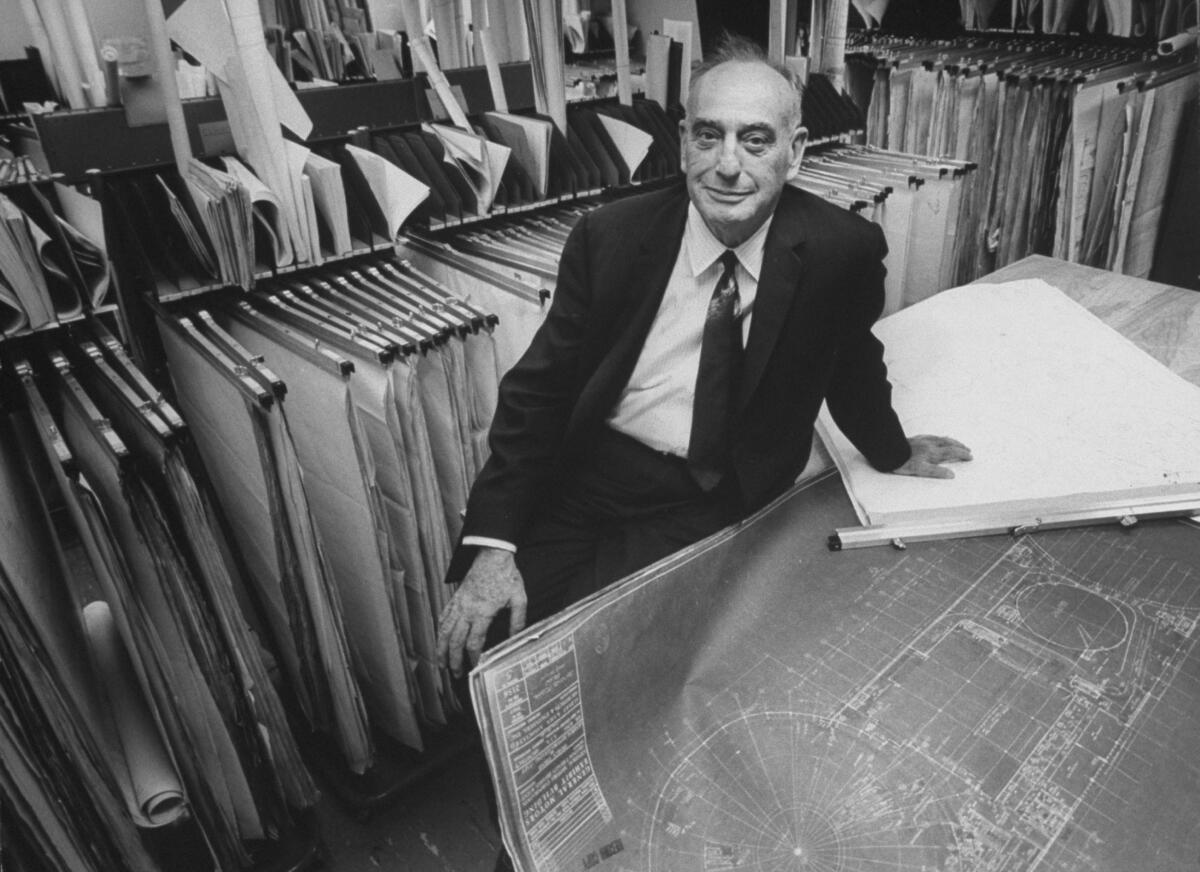
I recently started reading “The Power Broker,” journalist Robert Caro’s classic biography of Robert Moses, the urban planner and public works czar at least partially responsible for the construction of hundreds of infrastructure projects across the state of New York during the 20th century — highways, parks, playgrounds, bridges, tunnels, hydroelectric dams and more.
At least through the first 100 pages, Caro has done an excellent job exploring the political power required to build such sweeping public works projects — and also the downsides those project can bring without sufficient foresight and careful study.
I was especially struck by Caro’s description of New York City’s Riverside Park, where I spent a bunch of time as a college student. As Moses walked through the park more than a century ago, he saw “a wasteland six miles long,” Caro writes:
“The ‘park’ was nothing but a vast low-lying mass of dirt and mud. Running through its length was the four-track bed of the New York Central, which lay in a right-of-way that had been turned over to the railroad by the city half a century before. Unpainted, rusting, jagged wire fences along the tracks barred the city from its waterfront.... The engines that pulled trains along the tracks burned coal or oil; from their smokestacks a dense black smog rose toward the apartment houses, coating windowsills with grit.”
Moses had a vision for how the park could be improved — a vision he eventually made a reality:
”...the ugly [railroad] tracks completely hidden by [a] great highway, cars traveling slowly along it, their occupants enjoying the view, and along the highway stretching green parks filled with strollers, tennis players and families on bicycles.”
The green park filled with strollers and bicycles? That sounds wonderful. The highway along the river? Not so much.
I can only imagine that 100 years ago, a highway sounded like a cleaner, quieter, more pleasant alternative to train cars burning coal — and that certainly would have been the case. But with time comes understanding. We now know that living near freeways is terrible for your health, and that gasoline-fueled cars and trucks are one of the biggest causes of climate change.
I hope that 50 years from now, I’ll look back at my stories calling for big solar and wind farms and see them as wildly outdated, given the even-cleaner energy technologies we’ll have developed by then. But there are no guarantees. We’ve got to work with what we have — and right now, we have a climate emergency for which solar and wind farms are some of the best solutions.
So let’s tear down coal plants, stop expanding highways and keep building solar — until something better comes along.
This column is the latest edition of Boiling Point, an email newsletter about climate change and the environment in California and the American West. You can sign up for Boiling Point here. And for more climate and environment news, follow @Sammy_Roth on X.
Toward a more sustainable California
Get Boiling Point, our newsletter exploring climate change, energy and the environment, and become part of the conversation — and the solution.
You may occasionally receive promotional content from the Los Angeles Times.






